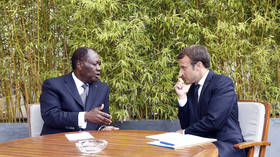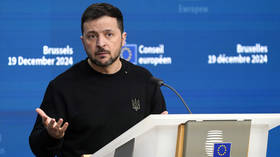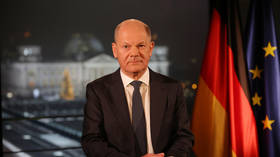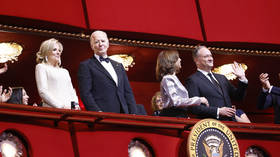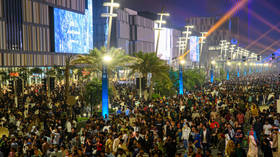‘US must consider arming military personnel who interact with public’
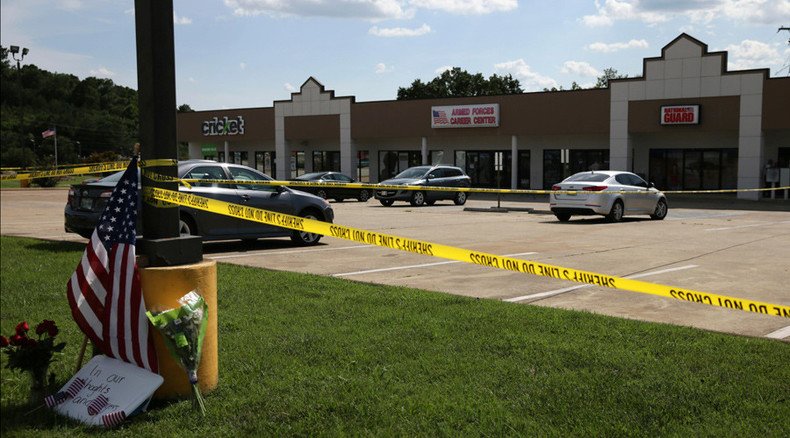
Soldiers are heroes in the US, but they are now also considered symbolic targets for domestic terrorists, the director of the Center for the Study of Hate and Extremism at California State University, Brian Levin, told RT.
Gunman Mohammad Youssuf Abdulazeez killed four US marines in a shooting rampage at two naval facilities in Tennessee on Thursday. The attacker also injured three other people, including a police officer, before he was shot dead.
RT: FBI officials are investigating the shooting as an "act of domestic terrorism." What do you think could have been the gunman's motive?
Brian Levin: We don’t know for sure, but in cases like this where the target is a military installation, or we saw the other week a church. Anytime we have a symbolic target, the FBI is going to look at it as a potential act of domestic terrorism. Here we have someone who is a naturalized citizen, who had targeted a military installation. And these installations are targeted in the folklore of this movement of south-east jihadists of which ISIS [Islamic State] is a part of.
RT: You’ve mentioned that there have been rumors about the involvement of Islamic State [IS, formerly ISIS/ISIL] in this attack, with many IS-connected social media accounts celebrating the shooting. Could the killer have acted on behalf of the terrorist group, or is this a lone wolf type of incident?
BL: It could be both: this could have been a lone wolf who is in fact acting on behalf of ISIS or AQAP [Al-Qaeda in the Arabian Peninsula]. Look, one of the things we’re seeing across the ideological spectrum, whether it is white supremacists, animal liberation extremists, anarchists, and as well southeast jihadists like ISIS, is the lone warrior, the lone wolf.
When I testified before Congress 20 years ago we talked about this and this is a tactic that is both used in the folklore of this movement of ISIS and others. But it’s also one that is strategic. In other words, what it does, it allows folks to sneak through who may not have an apparent direct connection, so that these terrorist groups can inspire acts of terrorism without having their fingerprints and return address all over the crime scene.
RT: What are the security implications for military centers like these across the US?
BL: There was a fellow named Abdulhakim Muhammad who in June 2009 hit a military recruiting center in Little Rock, Arkansas, killing one service member and wounding another. And what I think we have to do is look at hardening these targets, either around the perimeter with bullet resistance glass, as well as - in the US and elsewhere - we have to consider arming military members who are interacting with the public when they are in uniform at least in certain situations. And I think we’re going to see the review of that policy almost immediately here in the US.We saw an attack on Lee Rigby over in England while he was walking in a road and hacked to death in London. So these are now symbolic targets; they are heroes here in the US and we have to make sure that those of us who protect us can protect themselves as well.
RT: How do incidents like this play into the gun debate in the US?
BL: They play insignificantly. Interestingly enough, the Supreme Court has held that there is least some right to private gun ownership in the home, at least with respect to handguns. They have none ruled with respect to military-style weapons, which probably could be regulated. That being said, out of the thousands of people who are killed with guns each year in the US, only several hundred are killed with rifles, of which assault rifles are a subset of. So the most widely-used guns are the handguns here in the US, and those seem to be - at least in the home - the most protected by the Constitution. The rifles and assault rifles which can be regulated are really comprise in much smaller, less than 400 fatalities each year.

Guns common tactic in terrorist incidents
Foreign affairs expert Max Abrahams tells RT that guns are very common tactic in weapon used in latest shooting in Tennessee and terrorist attacks in Tunisia or Mumbai.
RT: Do you think [the Tennessee rampage] was a preplanned attack or a spontaneous incident?
MA: One can’t be sure, but what is clear is that the US has a real domestic terrorism problem. All sorts of different kinds of terrorists, in terms of their ideological background. We have white supremacist terrorists; we have a rapid rise in ISIS sympathizers. Over the July 4 weekend apparently 10 terrorism suspects were all arrested.
Around that time period in Massachusetts, where I’m living right now, just yesterday there was another ISIS sympathizer; two days ago another ISIS sympathizer arrested; today there has been one in Ohio. Apparently, the FBI has under surveillance in all 50 US states potential terrorist suspects. I think that the nation is really jittery given the rise and threats, especially due to the lone wolf threat. I think there is real basis to this concern.
RT: We still keep seeing incidents like this, shootings deadly ones in the US. And that fits in with the right to bear arms in the country. How do incidents like this play into the whole gun debate in the US?
MA: It always cuts both ways. You could say: “Look, this gunman shouldn’t have a gun, we need tougher gun laws!” But other people will say: “No, if the public had more guns then we could have taken this guy out.” So whenever there is a gun attack, it actually in a way strengthens both those who are for and against more gun control. This attack happened in the south where Americans tend to be friendlier in their position towards guns. Gun violence perpetrated by terrorism is a very real concern. We saw that in Tunisia, for example; the Mumbai attacks also used guns. So guns are very common tactic in weapon used in these kinds of terrorist incidents.
The statements, views and opinions expressed in this column are solely those of the author and do not necessarily represent those of RT.
The statements, views and opinions expressed in this column are solely those of the author and do not necessarily represent those of RT.



